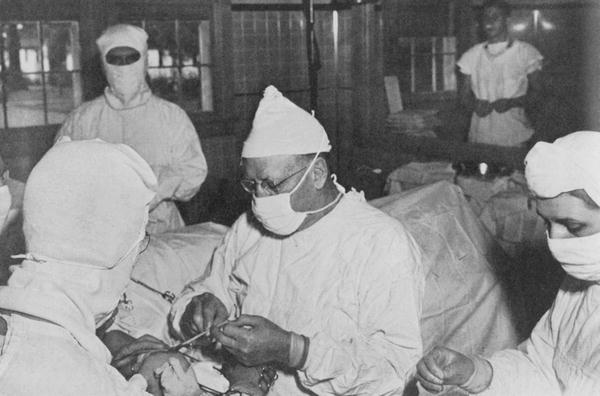War time
Dr. Sterling Bunnell
The specialty of hand surgery developed during World War II. Battle-induced injuries to bones, joints, nerves and arteries required expertise from several surgical disciplines. Yet in the press of war, the gathering of so many specialists in one place was not practical. The need for a select group of surgeons to care for all components of the arm quickly became obvious.
Enter Dr. Sterling Bunnell, a consultant to the U.S. Army who created a training program teaching interested surgeons the multiple skills required to fulfill that need. Dr. Bunnell's program was the progenitor of the modern hand surgery specialty.
current training
General Normal T. Kirk
Current training for hand surgeons requires completion of a program in Orthopedic, General or Plastic Surgery, and then passing the certifying board of that specialty. Aspiring hand surgeons must next complete a yearlong Hand Surgery Fellowship in which they receive intensive training in the diagnosis and treatment of arm problems. They become certified when they pass a final exam: the Certificate of Added Qualifications in Hand Surgery.
The historical context for the three qualifying fields is that both plastic surgery and orthopedic surgery are more recent branches off the general surgery main trunk. Modern hand surgery began in World War II as a military planning decision. US Army Surgeon General, Major General Norman T. Kirk, knew that hand injuries in World War II had poor outcomes in part because there was no formal system to deal with them. Kirk also knew that his civilian general surgical colleague Dr. Sterling Bunnell had a special interest and experience in hand reconstruction. Kirk tapped Bunnell to train military surgeons in the management of hand injuries to treat the war casualties, and at that time hand surgery became a formal specialty. Orthopedic surgeons continued to develop special techniques to manage small bones, as found in the wrist and hand. Pioneering plastic surgeons developed microsurgical techniques for repairing the small nerves and arteries of the hand. Surgeons from all three specialties have contributed to the development of techniques for repairing tendons and managing a broad range of acute and chronic hand injuries.

















